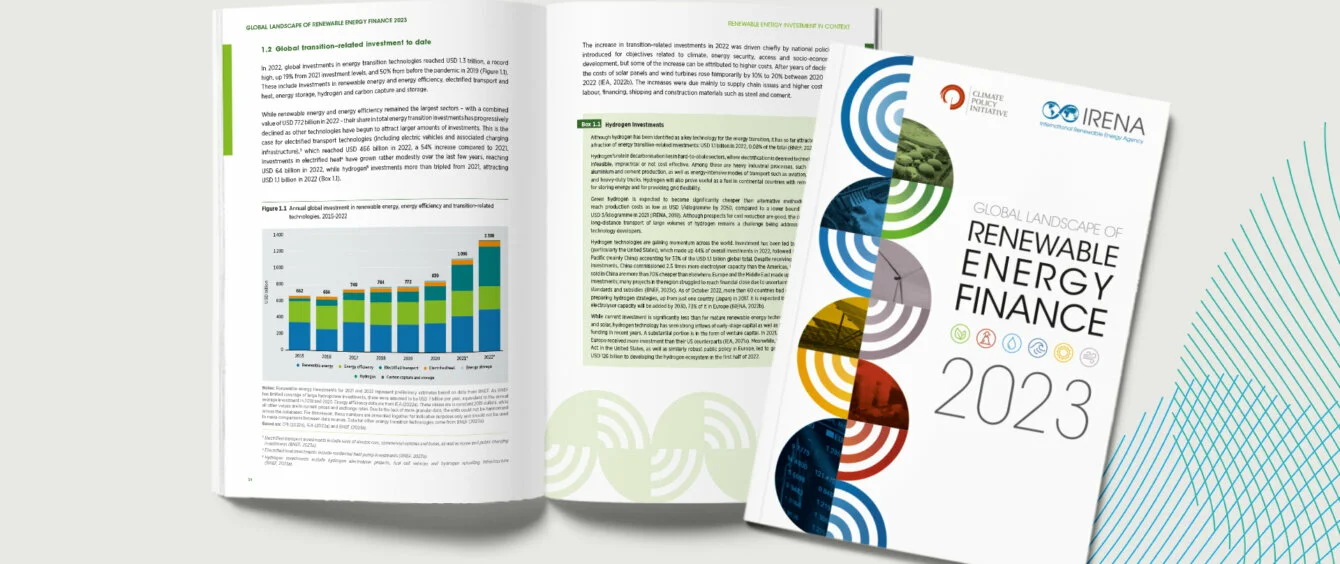Global investment in energy transition technologies last year reached a record $1.3 trillion, an increase of 19% on 2021 and 50% higher than pre-Covid levels in 2019, according to a new report from the International Renewable Energy Agency (IRENA).
The energy transition’s growing momentum is good news, but IRENA warns that far more capital needs to be deployed to keep the world on track to limit the rise in global temperatures to 1.5°C above pre-industrial levels.
This, IRENA estimates, would require $5.7 trillion a year of new investment in the energy transition on average between 2021-2030 and then a further $3.7 trillion each year from 2031-2050.
Data trends point to widening and deepening of the transition
Nonetheless, three encouraging trends are identifiable from the data, which indicate both a broadening and deepening of the energy transition.
- Over the last three years there has been a significant increase in investment in renewable energy, led by wind and solar power.
- Spending on transport electrification has expanded exceptionally fast in the last two years. In 2022, for the first time, investment in e-mobility was on a par with renewable energy.
- Investment in electrified heat has jumped in the last two years and looks likely to continue rising as Europe, in particular, encourages the uptake of heat pumps as an alternative to oil or gas-fired heating.
A key takeaway is the growing interconnectedness of the energy transition. Investment in renewable energy must continue to accelerate as both e-mobility and electrified heating are dependent on the sustainable generation of clean electricity.
Energy storage investment has also made gains, while spending on energy efficiency has stayed broadly stable over the 2015-2022 period, according to the IRENA report.
Counter trend: fossil fuel spending also rising
While the energy transition trend is positive directionally – if not yet sufficient in scale – fossil fuel spending is experiencing a renaissance, driven not least by heightened security of supply concerns in the wake of Russia’s invasion of Ukraine and the impact it has had on global markets for energy commodities.
Fossil fuel investment fell 22% in 2020, year on year, but bounced back by 15% in 2021 and by a further 6% last year, according to preliminary data, returning investment levels close to pre-pandemic levels.
IRENA estimates that a 1.5°C pathway requires the redirection of around $0.7 trillion a year from fossil fuels into energy transition technologies.
The data shows that fossil fuel investment is still much larger than investment in renewable energy, although not larger than total energy transition spending. The former rose from $897 billion in 2021 to $953 billion in 2022, compared with an increase from $430 to $499 billion, respectively, for renewable energy.
Not only that, but subsidies for fossil fuels increased in 2021 and 2022, owing to price pressures. IRENA says fossil fuel subsidies need to be phased out, accompanied by safety nets for vulnerable groups of consumers.
Achieving a just and equitable energy transition
Geographically, East Asia and the Pacific region, led by China, attracted the majority of energy transition investment – two-thirds in 2022.
This was followed by Canada and the US, and then Europe. The US 2022 Inflation Reduction Act and the EU’s Green Deal Industrial Plan for the Net-Zero Age, are both expected to mobilise more capital for the energy transition.
However, IRENA highlights the lack of spending in developing and emerging economies, where a few countries — Brazil, Chile and India – account for the majority of investment.
The agency estimates that more than 70% of the world’s population, mostly in developing and emerging economies, received only 15% of the global investment in renewables in 2022.
The report also found that the private sector provides the lion’s share of investment in renewable energy, and that commercial financial institutions and corporations are the main private finance providers. IRENA says “the international flow of public money to renewable energy has been in decline since 2018” and recommends new policies to ‘crowd in’ more private finance.
The geographic inequality in energy transition spending means large differences in progress towards net zero carbon economies by 2050.
According to IRENA: “Public funding must flow into the renewable energy sector (covering all segments of the value chain), the wider energy sector and the economy as a whole, for a just and equitable energy transition.”
